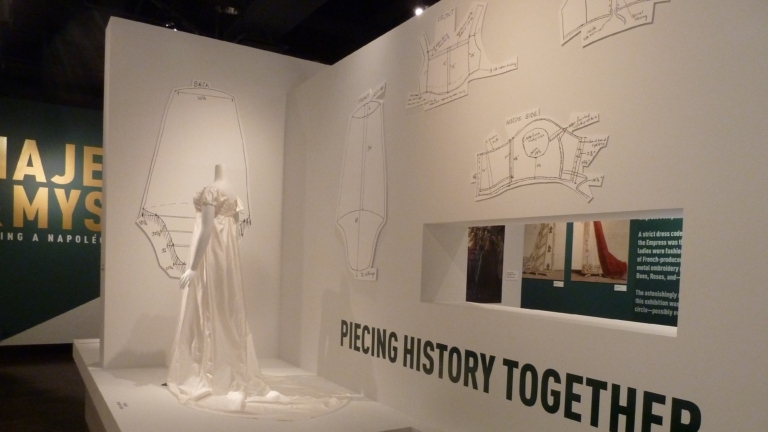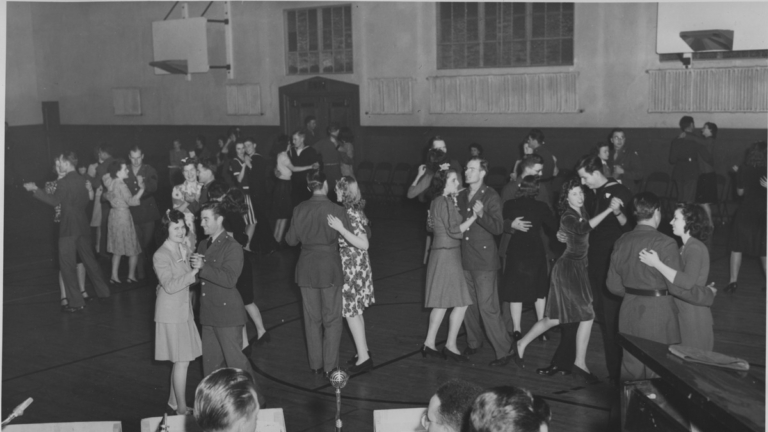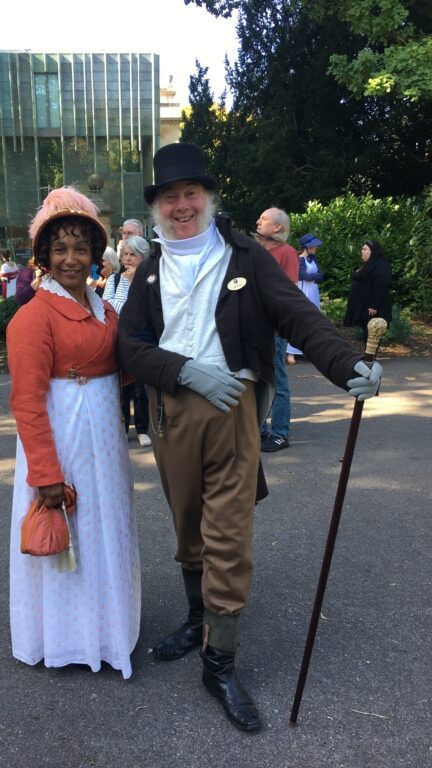Help preserve a Napoléonic court ensemble

By Kathe Gust
GBACG Membership Coordinator

Photo: Kathe Gust
Do you want to help be a part of costume history? The Fashion Institute of Design & Merchandising (FIDM) Museum is currently fundraising to acquire, study and preserve a rare Napoléonic court ensemble, possibly worn by Empress Joséphine herself, through its “Operation 1804″ initiative.
Matching Donations by the GBACG
The Museum needs to raise $120,000 to restore the gown to its original splendor and learn more about it in the process. In conjunction with the GBACG’s “At Home with Joséphine at Malmaison” soiree, the GBACG will be matching donations to “Operation 1804.” Whatever amount members and non-members donate via the GBACG, even those who don’t attend the soiree, the GBACG will match up to $1,000. To donate, click on the following PayPal link: PayPal GBACG “Operation 1804” Donation Link
Napoleonic Ensemble Possibly Worn by the Empress Joséphine
Why should we help FIDM acquire this ensemble? The ensemble at the focus of this effort, a Napoléonic court bodice, skirt and train that is currently in pieces, was worn by a high-ranking member of the imperial circle—possibly even Empress Joséphine herself. It is said to have been made for the Empress by her court dressmaker Louis Hippolyte LeRoy, who worked with designer Jean-Baptiste Isabey. Joséphine allegedly did not repeat her ensembles and was known to have changed her attire several times a day, so it is very possible that this extravagant gown in her style was, in fact, made for the Empress.
The gown has been owned since soon after its creation by a British family that stated a relative doing the Grand Tour purchased it in France after Napoléon complained of its exorbitant cost and refused to pay the dressmaker’s bill, even though the dress had been worn. The current owners loaned the gown to FIDM, where it was on display during February–April 2019.
Photo: Kathe Gust
The bodice of the gown has an extremely short length, which allows it to be dated to the first decade of the 19th century. The skirt and train are made of silk net embroidered with gold and silver in motifs of the empire: bees, roses and tulips. Sheets of metal were pounded and sliced to create thin strips, which were passed through the net yardage, while stretched across a frame.
The FIDM Museum’s Research and Restoration Plans
The FIDM Museum is charged with collecting “objects with outstanding design merit,” defined as: having “dynamic visual appeal;” “being an excellent example of an era, culture or a designer’s work”; and “having meaningful artistic and social significance.” This artifact certainly meets those criteria.
The ensemble also represents, not only a rare object for study—since there are few of these ensembles in existence anywhere, but an opportunity to have such an item available in an American collection. FIDM Associate Curator Christina Johnson has said that she knows of no other similar artifact worn by Empress Joséphine preserved in the United States.
Photo: Kathe Gust
At the turn of the 19th century, fashion was in flux. The neoclassical designs in vogue represented a commitment to democracy and a rejection of excessive grandeur. However, unadorned garments made of humble fabrics hurt France’s textile and fashion industry, which was much diminished in the post-Revolution era. Napoléon saw his re-establishment of a court as an economic opportunity to revive this, so he mandated a formal dress code at all court functions. Muslin garments were no longer allowed at court, as they came to France from India via England, a rival European textile center.
Although much may be learned from books, reading descriptions and looking at photos of an object is nothing compared to spending quality time with it. Analyzing stitches and pinholes and observing actual marks of wear are necessary activities for any thorough object-based analysis.

Photo: Kathe Gust
Questions that can possibly be answered by examination might be how the bodice and train were attached to the skirt, do the fragments of detached metal trim give us new insights into embroidery methods of the era, and does the physical size of the bodice match with other of Josephine’s known gowns.
According to Johnson, FIDM plans, if successful in acquiring the ensemble, to conduct in-person research at institutions holding known examples from her wardrobe and other women’s Napoléonic court attire. After the long-term research and conservation project is complete, the conserved ensemble will again be on display at the museum and they will also publish an article detailing discoveries and produce documentary film footage about the research.
If you want to contribute to GBACG’s matching donations, click the Paypal donation link here: PayPal GBACG “Operation 1804” Donation Link

Photo: Kathe Gust
Bibliography:
- Chrisman-Campbell, Kimberly. “The Empress of Fashion: What Joséphine Wore.” In Joséphine and the Arts of the Empire, edited by Eleanor P. DeLorme, 157-174. Los Angeles: J. Paul Getty Museum, 2005.
- Séguy, Philippe. “Costume in the Age of Napoléon.” In The Age of Napoléon: Costume from Revolution to Empire, 1789-1815, edited by Katell le Bourhis, 23-118. New York: The Metropolitan Museum of Art, 1989.
- Siegfried, Susan L. “Fashion and the Reinvention of Court Costume in Portrayals of Joséphine de Beauharnais (1794-1809).” Apparence(s) [online], 6, 2015. http://journals.openedition.org/apparences/1329.

